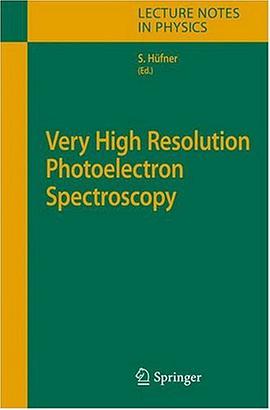1 Introduction 1
1.1 Heterogeneous Catalysis 1
1.2 The Aim of Catalyst Characterization 4
1.3 Spectroscopic Techniques 5
1.4 Research Strategies 7
References 9
2 Temperature-Programmed Techniques 11
2.1 Introduction 11
2.2 Temperature-Programmed Reduction
2.2.1 Thermodynamics of Reduction 13
2.2.2 Reduction Mechanisms 15
2.2.3 Applications 18
2.3 Temperature-Programmed Sulfidation 21
2.4 Temperature-Programmed Reaction Spectroscopy 22
2.5 Temperature-Programmed Desorption 23
2.5.1 TPD Analysis 29
2.5.2 Desorption in the Transition State Theory 31
2.6 Temperature-Programmed Reaction Spectroscopy in UHV 35
References 37
3 Photoemission and Auger Spectroscopy 39
3.1 Introduction 39
3.2 X-Ray Photoelectron Spectroscopy (XPS) 41
3.2.1 XPS Intensities and Sample Composition
3.2.2 XPS Binding Energies and Oxidation States 46
3.2.3 Shake Up, Shake Off, Multiplet Splitting and Plasmon Excitations 50
3.2.4 Experimental Aspects of XPS 51
3.2.5 Charging and Sample Damage 52
3.2.6 Dispersion of Supported Particles from XPS 54
3.2.7 Angle-Dependent XPS 59
3.2.8 In-Situ and Real Time XPS Studies 63
3.3 Ultraviolet Photoelectron Spectroscopy (UPS)
3.3.1 Photoemission of Adsorbed Xenon 71
3.4 Auger Electron Spectroscopy 74
3.4.1 Energy of Auger Peaks 75
3.4.2 Intensity of Auger Peaks 77
3.4.3 Application of AES in Catalytic Surface Science 78
3.4.4 Scanning Auger Spectroscopy 80
3.4.5 Depth-Sensitive Information from AES 80
References 81
4 The Ion Spectroscopies 85
4.1 Introduction 85
4.2 Secondary Ion Mass Spectrometry (SIMS) 86
4.2.1 Theory of SIMS 88
4.2.2 Electron and Photon Emission under Ion Bombardment 90
4.2.3 Energy Distribution of Secondary Ions 91
4.2.4 The Ionization Probability 92
4.2.5 Emission of Molecular Clusters 94
4.2.6 Conditions for Static SIMS 94
4.2.7 Charging of Insulating Samples 95
4.2.8 Applications on Catalysts 95
4.2.9 Model Catalysts 99
4.2.10 Single Crystal Studies 101
4.2.11 Concluding Remarks 105
4.3 Secondary Neutral Mass Spectrometry (SNMS) 105
4.4 Ion Scattering: The Collision Process 106
4.5 Rutherford Backscattering Spectrometry (RBS) 108
4.6 Low-Energy Ion Scattering (LEIS) 112
4.6.1 Neutralization 113
4.6.2 Applications of LEIS in Catalysis 114
References 117
5 Mo ̈ssbauer Spectroscopy 121
5.1 Introduction 121
5.2 The Mo ̈ssbauer Effect 122
5.3 Mo ̈ssbauer Spectroscopy 126
5.3.1 Isomer Shift 128
5.3.2 Electric Quadrupole Splitting 129
5.3.3 Magnetic Hyperfine Splitting 131
5.3.4 Intensity 132
5.4 Mo ̈ssbauer Spectroscopy in Catalyst Characterization 134
5.4.1 In-Situ Mo ̈ssbauer Spectroscopy at Cryogenic Temperatures 137
5.4.2 Particle Size Determination 139
5.4.3 Kinetics of Solid-State Reactions from Single Velocity
Experiments 140
5.4.4 In-Situ Mo ̈ssbauer Spectroscopy Under Reaction Conditions
5.4.5 Mo ̈ssbauer Spectroscopy of Elements Other Than Iron 143
5.5 Conclusion 145
References 145
6 Diffraction and Extended X-Ray Absorption Fine Structure (EXAFS) 147
6.1 Introduction 147
6.2 X-Ray Diffraction 148
6.2.1 In-Situ XRD: Kinetics of Solid-State Reactions 152
6.2.2 Concluding Remarks 154
6.3 Low-Energy Electron Diffraction (LEED) 155
6.4 X-Ray Absorption Fine Structure (XAFS) 159
6.4.1 EXAFS 160
6.4.2 Quick EXAFS for Time-Resolved Studies 170
6.4.3 X-Ray Absorption Near Edge Spectroscopy
References 175
7 Microscopy and Imaging 179
7.1 Introduction 179
7.2 Electron Microscopy 180
7.2.1 Transmission Electron Microscopy 182
7.2.2 Scanning Electron Microscopy 184
7.2.3 Scanning Transmission Electron Microscopy
7.2.4 Element Analysis in the Electron Microscope 190
7.3 Field Emission Microscopy and Ion Microscopy 193
7.3.1 Theory of FEM and FIM 193
7.4 Scanning Probe Microscopy: AFM and STM 197
7.4.1 AFM and SFM 198
7.4.1.1 Contact Mode AFM 199
7.4.1.2 Non-Contact Mode AFM 200
7.4.1.3 Tapping Mode AFM 200
7.4.2 AFM Equipment 200
7.4.3 Scanning Tunneling Microscopy (STM) 205
7.4.4 Applications of STM in Catalytic Surface Science 208
7.5 Other Imaging Techniques 211
7.5.1 Low-Energy Electron Microscopy and Photoemission Electron Microscopy 212
References 214
8 Vibrational Spectroscopy 217
8.1 Introduction 217
8.2 Theory of Molecular Vibrations 218
8.3 Infrared Spectroscopy 224
8.3.1 Equipment 226
8.3.2 Applications of Infrared Spectroscopy 226
8.3.3 Transmission Infrared Spectroscopy 227
8.3.4 Diffuse Reflectance Infrared Fourier Transform Spectroscopy (DRIFTS) 230
8.3.5 Attenuated Total Reflection 233
8.3.6 Reflection Absorption Infrared Spectroscopy (RAIRS) 234
8.4 Sum-Frequency Generation 235
8.5 Raman Spectroscopy 238
8.5.1 Applications of Raman Spectroscopy 240
8.6 Electron Energy Loss Spectroscopy (EELS) 243
8.7 Concluding Remarks 247
References 248
9 Case Studies in Catalyst Characterization 251
9.1 Introduction 251
9.2 Supported Rhodium Catalysts 251
9.2.1 Preparation of Alumina-Supported Rhodium Model Catalysts 252
9.2.2 Reduction of Supported Rhodium Catalysts 254
9.2.3 Structure of Supported Rhodium Catalysts 257
9.2.4 Disintegration of Rhodium Particles Under CO 261
9.2.5 Concluding Remarks 264
9.3 Alkali Promoters on Metal Surfaces 264
9.4 Cobalt–Molybdenum Sulfide Hydrodesulfurization Catalysts 272
9.4.1 Sulfidation of Oxidic Catalysts 272
9.4.2 Structure of Sulfided Catalysts 276
9.5 Chromium Polymerization Catalysts 284
9.6 Concluding Remarks 292
References 293
Appendix Metal Surfaces and Chemisorption 297
A.1 Introduction 297
A.2 Theory of Metal Surfaces 297
A.2.1 Surface Crystallography 297
A.2.2 Surface Free Energy 301
A.2.3 Lattice Vibrations 302
A.2.4 Electronic Structure of Metal Surfaces 305
A.2.5 Work Function 309
A.3 Chemisorption on Metals 311
A.3.1 Adsorption of Molecules on Jellium 315
A.3.2 Adsorption on Metals with d-Electrons 317
A.3.3 Concluding Remarks 319
References 319
Index 321
· · · · · · (
收起)






















